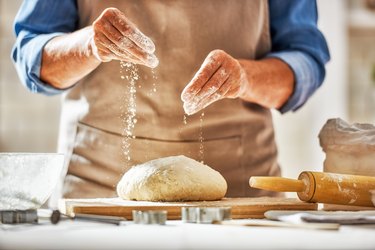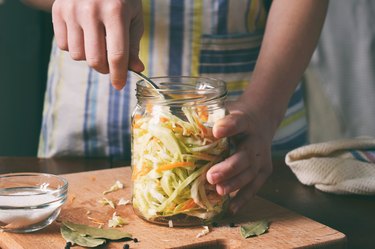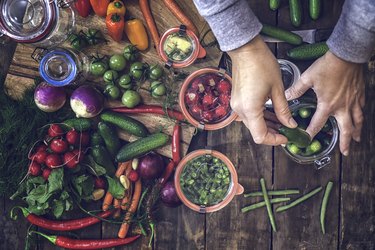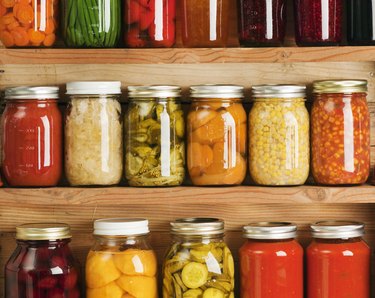
Whether you've got extra time because the kids are away, you finished work early or, well, you're cooped up at home in the middle of a pandemic, turning to new cooking hobbies can help you de-stress — all while creating healthy and delicious food.
Using your free time for fun kitchen activities such as bread-baking or home-canning can even teach you a new skill.
Baking your own loaf at home isn't only therapeutic (think about kneading the gooey dough and the smell of fresh bread wafting through your kitchen), it also makes breakfast that much better.
Meanwhile, canning fruits and veggies at home can help you save all the extra produce you bought from the trash.
Next time you've got a few free minutes you're not sure what to do with, consider trying your hand at these cooking hobbies.
Bake Bread Like a Pro

Homemade bread can be healthier than the sliced stuff you buy in stores since you won't add any preservatives and can control how much sugar goes into your recipe.
Plus, bread doesn't require many ingredients — all you need is flour, water, yeast and salt.
You can buy bread flour, which is higher in protein than all-purpose flour and will give you that chewy texture you want. But if it isn't readily available, you can opt for all-purpose flour — just substitute it in a 1:1 ratio for bread flour.
And you don't even need a bread machine to make a hearty loaf. Just pop it into the oven and watch as your kitchen starts to smell like your favorite bakery.
Beginners and experts alike should save these bread-baking tips and a tasty recipe for a honey whole-wheat loaf.
Ferment Foods for Good Gut Health

Fermentation preserves food or drinks for long-term shelf life.
There are many different types of fermented foods, including yogurt, sourdough bread, kombucha, beer and sauerkraut. Pretty much any fruit or vegetable you like can be fermented, too.
All you need to ferment some produce is your fruit and veggies of choice (we like cabbage, peppers and cucumbers), jars with lids and salt. As the produce soaks, the bacteria in the mixture ferments the sugar in the veggies or fruit.
This process breaks down the food and, as a result, makes some vitamins and minerals easier to absorb and allows probiotics — good bacteria that support gut health — to multiply.
Here's your step-by-step guide to fermenting food at home.
Pickle Fruits and Veggies Easily

Pickled veggies add brightness to any dish thanks to their salty, acidic taste.
Besides cucumbers, you can pickle just about any veggie (or fruit!) in your fridge, and all you need is some water, salt and vinegar to get it done.
Unlike the process of fermenting, pickling calls for vinegar and doesn't produce those good-for-you probiotics. However, pickling is quicker and simpler than fermenting.
Plus, pickled foods keep for a long time, which makes it easy and convenient to include produce on your plate when you've run out of the fresh stuff. Add the tangy toppings to salads, burgers, grain bowls, stir-fries or even meat marinades for a pop of flavor.
Find out how to make pickled onions, cucumbers, beets, carrots and ginger with this easy guide.
Can Foods to Extend Their Shelf Life

Canning is an economical way to save your recent grocery haul from rotting in your crisper drawer.
This method involves processing foods at high temperatures, removing all the air and then vacuum-sealing the food in jars to prevent spoilage.
FYI: You'll want to use glass jars rather than metal containers. Metal cans can only be used once, require special sealing equipment and are more expensive, per the National Center for Home Food Preservation.
You can easily can food at home using one of two methods: water-bath canning and pressure canning. Both methods work well for a variety of foods, however, pressure canning requires more equipment.
Pick the canning method you'd like to try and then give it a whirl at home on things like fresh veggies or prepped chili.